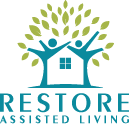Financing - How to finance Assited Living
Learn some strategies and tips to help pay for senior living
Senior care is expensive. Inside this guide, we provide some options to help with financing a senior living facility or home.
You will learn:
- What’s the 1st thing you need to do?
- What are the options for using your home equity ?
- What options are there for insurance?
- What government assistance is available?

Estate Planning
Your 1st Step Using Your Home as an Asset While estate planning does not provide direct funding for senior living, we feel it is a critical component that could impact your level of care as you age. If you become incapacitated, either mentally or physically, you need to ensure your assets and affairs are in good order and your wishes are documented and followed. At a minimum, a proper estate plan should have the following:
- Will
- Living Will
- Medical Power of Attorney (Health Care Directive)
- Power of Attorney (finances, business, assets, etc.)
- Trust This can seam overwhelming at times, but the process is quite simple if you find a good estate attorney to guide you through it. Now let’s get into the topic at hand – how to finance senior living. Most of us living in Northern Virginia are fortunate to have equity in our homes. The equity provides several viable options to offset the cost of senior living. Let’s review some of the most common choices.

Reverse Mortgage
A reverse mortgage is essentially a loan that is taken against the home’s equity. Loan amounts can be received as a single lump sum or in monthly installments. The loan does not have to be paid until the borrower passes away or moves from the home for one full year. In most cases, the loan is paid from the home’s equity when it is sold. While this is an option, there are limitations and costs. First, one of the homeowners must continue to live in the home. So a married couple can only have one person in a senior living community. The other one is required to live in the home. If both need to live in a senior community, they will not be eligible. If the spouse still living in the home decides to move, the loan must be repaid. This normally forces the sale of the property
Additionally, the amount that can be withdrawn is limited to 20% - 70% of the value of the home and the expenses and fees with a reverse mortgage are normally high. On the positive side, homeowners cannot be forced out of their home and there are no restrictions on how the money can be used.
HELOC
A Home Equity Line of Credit (HELOC) is a lone taken out of the equity of your home. You take out what you need, when you need it. Interest rates are normally low, and it provide another option for those not eligible for a reverse mortgage. HELOCs have lower expenses and fees but do require monthly payments like other loans or credit cards. For most scenarios, the HELOC is a better option than a Reverse Mortgage.


Sell Home & Items
Another viable option is to simply sell your primary home and the majority of its contents. This is a viable option for most of us in Northern Virginia. We are fortunate enough to have a lot of equity in our home. This could raise significant funds, help you downsize, and clean out a lot of accumulated “stuff”. A word of caution: only consider this option if you don’t anticipate moving back into the home. Also consider your spouse – they still need to place to live! Having equity in your home provides several viable options to pay for senior care expenses. Assess all of the options to see what’s best for your situation. Renting the Home We love this option, but it requires additional work and effort. You can use a Property Manager to do most of the work, but should have a spouse, your son or daughter or a reliable 3rd person to oversee the books and work with an accountant. The monthly rent received can offset the cost of in-home care or a senior living community.
Insurance Options
Do you have an insurance policy? If so, there may be options for you to get insurance to offset the cost of senior living. Life insurance comes in many shapes and sizes. How andthe amount of benefit you receive depends on the type of insurance and specifics of your individual policy,
Long term care insurance
Long-term care insurance offers programs that will pay for daily or long-term care as you age and require assistance. Like most insurance policies, you need to understand what the policy is, what is covered and most importantly what is NOT covered. Policies may cover nursing homes, assisted living, adult day care services, home care and other services. Again, make sure you know what you are buying.


life insurance settlement / life settlement
Life Settlement This is essentially selling your life insurance policy to a 3rd party and using the proceeds to fund a long-term care benefit plan. Or you can simply surrender the life insurance policy to the insurance provider. They will give you the accumulated cash for the full amount of the cash value. In most cases, you will need to pay taxes on the amount you receive. You will want to work with your tax professional before making any decisions.
permanent insurance - whole life insurance
Permanent Insurance Both Universal and Whole Life insurance policies build up a cash value. You can take a loan from the cash accumulated in the policy. The beauty of this is you won’t have to pay taxes on the money received since technically it is a loan.
1035 Exchange
A 1035 exchange allows you to move the cash value in one policy to another policy without having to pay taxes. For example, you can take cash value from your old long term care policy to fund a new long-term care policy. If done correctly, there are no taxes.

Additional Assistance
- Social Security - does not directly pay for senior living as a benefit. However, some states increase or supplement the amount of benefit received if they reside in an assisted living facility or group home. Check with your state to determine if you are eligible. Most senior living facilities or homes are paid through private pay. There are simply very little government services available to help offset the costs of senior living. There are, however, some options listed below that could help defer or reduce some of your costs.
- Medicare - be used to pay up to 100 days of skilled nursing and rehabilitation following a hospital stay. It cannot be applied to a senior living facility or home.
- Veterans Benefit - Medicare be used to pay up to 100 days of skilled nursing and rehabilitation following a hospital stay. It cannot be applied to a senior living facility or home. To help, we have partnered with a group called Veteran Angles. They provide a free service to screen your information to see if you’re a good candidate to receive the Aid and Attendance benefit. If you qualify, you will pay a nominal fee to an attorney to file the paperwork on your behalf. The process is simple and typically much quicker than attempting the filing process by yourself. This more than pays for the cost for the service.
- Medicare Advantage programs may pay for personal care or other supportive services as long as it is in an “in-home setting”. The law is a bit vague but could provide assistance in paying for long-term care services.
Summary
Financing senior care can seem overwhelming at times. Once you have your estate in good order (wills, power of attorneys, trusts, etc.), there are a variety of options to help offset the cost of senior care. Since the government does not provide many options, it’s up to us to find the best strategy to utilize our insurance policies and/or the equity in our homes to generate funds. What’s the best strategy? This will be unique to your situation. How much equity do you have in your home? Does your spouse need to stay in the home? What type of insurance do you have? What items are covered in the policy? The purpose of this paper was to guide you through some of the options that could be available to help. When you are ready to put together a detailed plan, we recommend contacting your insurance agent and tax professional. Together, this team will be able to put together the best plan for you and your loved one.
